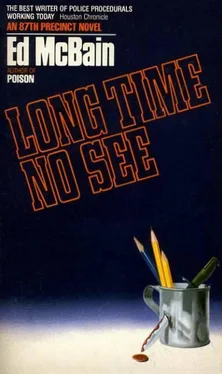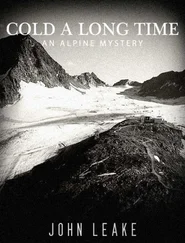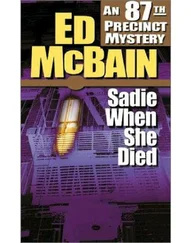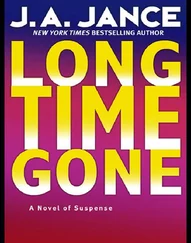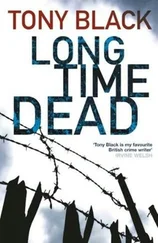“What sort of information?” O’Neill asked.
“I’m investigating a homicide in which the victim was a man named James Harris, served with the Army ten years ago, D Company, 2nd Battalion...”
“Let me take this down,” O’Neill said. “D Company, 2nd Battalion...”
“27th Infantry,” Carella said. “2nd Brigade of the 25th Infantry Division. I don’t have a platoon number. He was in Alpha Fire Team of the 2nd Squad.”
“Rank?”
“Pfc.”
“Service number?”
“Just a second,” Carella said, and consulted Jimmy’s file. He found the number and read off the eight digits slowly. O’Neill would later be feeding this into a computer, and Carella didn’t want any errors.
“Discharged or deceased?” O’Neill asked.
“Both,” Carella said.
“How’s that possible?”
“He was discharged ten years ago and killed last Thursday night.”
“Oh. Oh, I see. I meant... what I meant, we have the records here for anyone who was either discharged or killed in action. The Department of the Army would have the records on anyone retired from the service, or with the reserve. This man was discharged, you said?”
“Yes.”
“Honorable discharge?”
“Yes. Full disability pension.”
“He was wounded?”
“Yes.”
“When?”
“December fourteenth, ten years ago next month.”
“Okay,” O’Neill said, “what is it you want to know?”
“The names of the other men in his fire team.”
“On the date you just gave me?”
“Yes.”
“That might be possible,” O’Neill said. “Depends on who filed the action report.”
“Who normally files it?”
“The O.I.C. Or sometimes the—”
“Would that be the officer in command?”
“Yes, or sometimes the non-commissioned officer in command. There’s usually a second lieutenant in charge of a platoon, and an E-7 assisting him. If neither of those two witnessed the particular action that day, then the squad leader may have filed the action report, or even the E-5 leading the fire team. Do you understand how this is broken down?”
“Not exactly,” Carella said. “In my day the squad was the basic unit.”
“Well, it still is, but now the squad’s broken down into two fire teams, Alpha and Bravo. You’ve got five men in each team, with an E-6 leading the full squad, for a total of eleven men. The way each fire team breaks down, there are two automatic riflemen who are Spec 4’s or E-3’s, a grenadier who’s usually an E-4, two riflemen who are E-3’s, and an E-5 leading them.”
“I don’t know what all those numbers mean,” Carella said. “Spec 4’s, E-3’s...”
“Those are designations of rank. An E-3 is a Pfc., a Spec 4 is a Specialist 4th Class, a corporal. An E-5 is a three-striper, and so on.”
“Mm-huh,” Carella said.
“What I’m suggesting is that the action report may possibly list the men who were in Harris’ fire team.”
“Would that be in his personal file?”
“Yes,” O’Neill said.
“Well, I’ve got his file right here, and the action report doesn’t mention any other men in the fire team.”
“Who signed the report?”
“Just a minute,” Carella said, and dug through the sheaf of papers again. “A man named Lieutenant John Francis Tataglia.”
“That would’ve been his platoon commander,” O’Neill said. “That’s his Field 201-File you’ve got there, huh?”
“Yes.”
“And the action report doesn’t name the men in his fire team, huh?”
“No.”
“Would there be what we call a Special Order in his file?”
“What’s that?”
“It’s an order assigning a man to such and such a squad, and sometimes it’ll list the other men in the squad by name, rank and service number.”
“No, I didn’t run across anything like that.”
“Well then, I guess we’ll have to cross-check with Organizational Records. That may take a little while,” O’Neill said, “May I have your number, please?”
“Frederick 7-8024.”
“That’s in Isola, right?”
“Yes, the area code here—”
“I have it. What was your name again, please?”
“Detective Second/Grade Stephen Louis Carella.”
“You’re with a local law-enforcement agency, am I right?”
“Yes.”
“I’ll get back to you,” O’Neill said, and hung up.
He did not get back till close to eleven a.m. Carella had gone down the hall to Clerical for a cup of coffee, and was just returning to his desk when the telephone rang. He put down the paper carton and picked up the receiver.
“87th Squad, Carella,” he said.
“Harry O’Neill here in St. Louis. I’m sorry, but I didn’t get a chance to run this through the computer till a few minutes ago. I’ve got the company roster here — that’s a long sheet that lists all the men in a company and breaks the company down into four platoons, listing the men alphabetically and by rank. James Harris was in D Company’s 3rd Platoon. Now... depending on the morning reports of each platoon, you’ll sometimes get a breakdown of the squads and fire teams in those squads. The clerks in the 3rd Platoon kept very nice records. I’ve got those names you wanted.”
“Good,” Carella said, “let me have them, please.”
“Got a pencil?”
“Shoot.”
“Rudy Tanner, Pfc., automatic rifleman. That’s T-a-n-n-e-r.”
“Got it.”
“Karl Fiersen, E-4, grenadier.”
“Carl with a C?”
“With a K.”
“Would you spell the last name for me, please?”
“F-i-e-r-s-e-n.”
“Go on.”
“James Harris and Russell Poole, both Pfc.’s, riflemen. That’s Russell with two els and two els, and Poole with an e.”
“Okay."
“The sergeant leading the team was an E-5 named Robert Hopewell, just the way it sounds.”
“Right,” Carella said.
“Did you want the names of the platoon commander and his assistant?”
“If you’ve got them.”
“Commander was a man named Lieutenant Roger Blake, later killed in action. The next one’s a tough one, I’d better spell it. Sergeant John Tataglia, that’s T-a-t-a-g-l-i-a.”
“Are you sure about that?”
“About what?”
“Tataglia’s rank. Isn’t he the lieutenant who signed the action report? Just a second,” Carella said, and spread the sheaf of papers on his desk. “Yes, here it is, Lieutenant John Francis Tataglia.”
“Well, he’s listed as a sergeant on this.”
“On what?”
“The platoon’s morning report.”
“Any date on it.”
“December third.”
“The action report is dated December fifteenth.”
“Well, one or the other must be wrong,” O’Neill said “Unless he was promoted in the interim.”
“Is that likely?”
“It’s possible.”
“Can I get some addresses for these people?”
“I thought you’d never ask,” O’Neill said.
The list of last-known addresses for the four men in Jimmy’s fire team, as well as the man who’d once been his platoon sergeant, broke down this way:
John Francis Tataglia
Fort Lee
Petersburg, Virginia
Rudy Tanner
1147 Marathon Drive
Los Angeles, California
Karl Fiersen
324 Barter Street
Los Angeles, California
Robert Hopewell
163 Oleander Crescent
Sarasota, Florida
Russell Poole, the last man on the list, was also the only man from Alpha who lived in the city. Or, at least, he had lived in the city when he was discharged from the Army. His address was listed as 3167 Avenue L, in Majesta.
A series of phone calls to Directory Assistance came up with address confirmations for Robert Hopewell in Sarasota and Russell Poole here in the city. There were no telephone listings for Rudy Tanner or Karl Fiersen in Los Angeles; Carella could only assume both men had since moved. There was nothing else he could do to locate them, unless they’d been in trouble with the law since their discharge. He called the Los Angeles Police Department and asked for a records search in their Identification Section. The detective-sergeant to whom he spoke — in Los Angeles, they were rather more paramilitary concerning rank than were the police in this city — promised Carella he’d get back to him by the end of the day.
Читать дальше
